For Hardwick's Ridge Shinn, regenerative grazing is a key to easing environmental woes
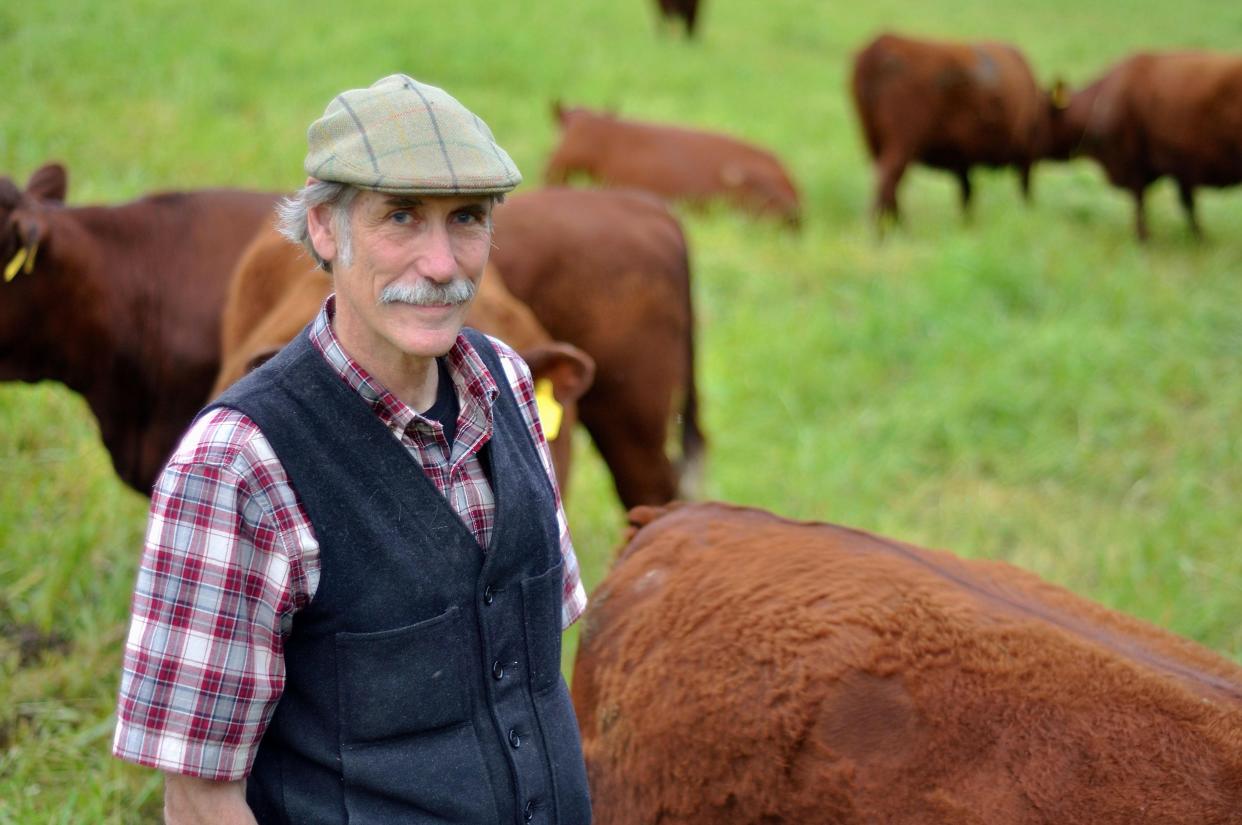
Ridge Shinn has been called a “carbon cowboy,” a “holistic grazier” and a “visionary farmer.”
True to all of these, in 2015 he founded Big Picture Beef, a 100% grass-fed beef company in which he partnered with farmers in the Northeast to aggregate and harvest beef cattle, and then sell the meat through the $50 billion distributor Performance Food Group. Its label could be found in places as disparate as the Big Y and the Petersham Country Store.
In 2022, Shinn founded the New England Grass-Fed Beef Initiative, a nonprofit, with the mission to educate more farmers in regenerative grazing, facilitate the regenerative paradigm shift and link farmers up to markets. Most recently, he has co-authored a book with environmentalist Lynne Pledger — "Grass-Fed Beef for a Post-Pandemic World: How Regenerative Grazing Can Restore Soils and Stabilize the Climate" — in which the authors call for a complete overhaul of the beef industry in the United States.
As the title suggests, the COVID-19 pandemic helped to underscore the vulnerability of the current system as one overly dependent on monopolistic industrial beef production that serves neither the consumer nor the environment well. Part of the antidote, local beef production, could shorten the supply chains while protecting the consumer and small regional farmers, and help to rejuvenate the rural economy of New England.
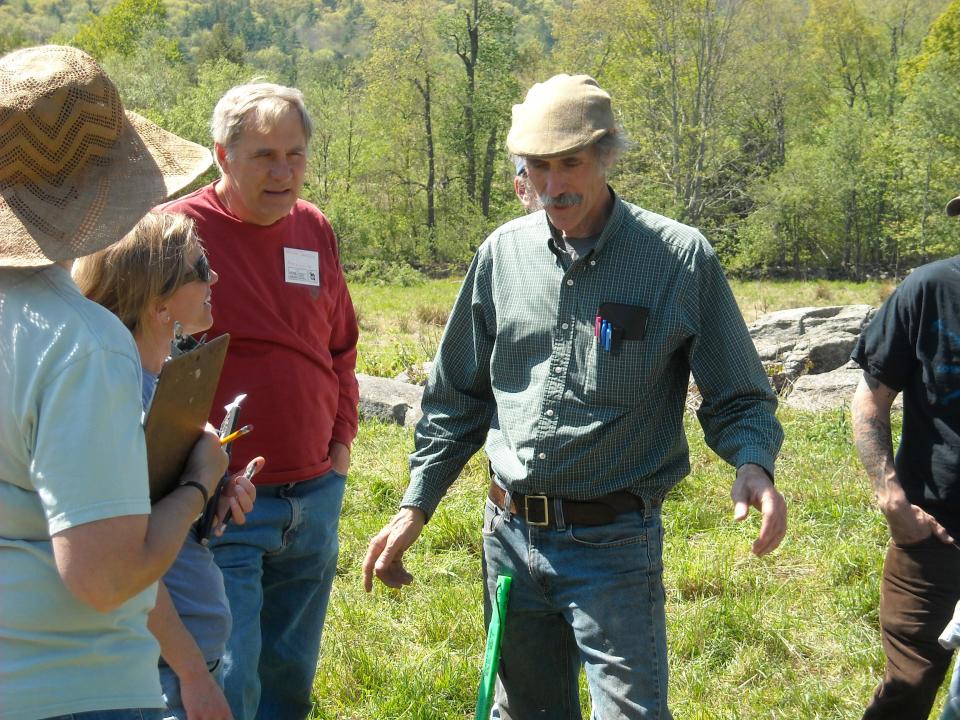
What is regenerative grazing?
Shinn learned 19th-century farming skills as a young man while employed at the living museum of Old Sturbridge Village. According to early documentation, two ships after the Mayflower’s arrival brought the first cattle — the Devon from southwestern England — to the shores of New England. Arriving in the spring of 1624, onboard the Charity, were one Devon bull and three heifers. With their signature auburn coats, the Devons are typically medium-sized, mild-tempered and highly prized for oxen. As they thrive in rugged environments, the Devon became the most common cattle in New England by the 1600s.
Yet by the late 1970s Old Sturbridge Village had difficulty procuring this once-ubiquitous breed, which it hoped to showcase at its American Bicentennial Celebration. This baffling lack led to the serendipitous founding of what would later be called The Livestock Conservancy, a nonprofit devoted to the conservation of rare breeds and genetic diversity in livestock and poultry. Shinn served as the organization’s first executive director.
However, Shinn's search for Devons did not end at Old Sturbridge. He eventually adopted the Devon breed to form his own herd after finding a retiring farmer in New Zealand willing to sell his Rotokawa Devons. In this way, a herd of 87 boarded two 747s and headed for California, where they remained 45 days in quarantine before the cross-country road trip to their new home in Hardwick.
Shinn continued to raise Devons and still promotes them as an ideal breed for regenerative grazing, convinced that 100% grass-fed is actually much less expensive to produce than feedlot beef, “It’s just photosynthesis. There are no tractors. No barns. All of that infrastructure is not needed. Which is one of the reasons we get a lot of pushback. We don’t need pesticides, herbicides. We don’t need GMO … Round-Up for corn. We don’t need any of that stuff.”
In developing a viable regenerative model, Shinn advocates keeping the current bifurcation within the industry: raising the cows and calves on one farm and then sending them to another farm for finishing (fattening) since each of these phases requires a different skillset. In the cow-calf operation, the cow basically does all the work. Because she is mature and no longer growing but feeding the calf, she requires only a maintenance in good nutrition. She could be moved every three days. But on a finishing farm, in order to make the cattle fat they need abundant energy.
On the grass plant, the energy is on the top third of the plant with the lignin and protein on the lower parts. The goal of the finishing farm is to graze the cattle as a buffalo would graze in the wild. Cattle are allowed to eat the top of the plant, but before they start eating further down the stock they need to be moved again. They are constantly being moved to different paddocks with the use of an electric fence. This is known as multipaddock grazing to distinguish it from continuous grazing on a single pasture, since carbon sequestration is one of the prime goals of regenerative grazing.
But the huge novelty of the regenerative paradigm is that this rapid grazing recreates the soil microbiome by actually stimulating the whole process. By grazing just half the plant, that which remains can function as a solar collector so that new carbon can keep the whole system going. If grass were simply mown for hay or grazed to the ground, there would be nothing left for photosynthesis.
In the regenerative model Shinn envisions the calves not being sent to grain feedlots after a year but instead to create grass-finishing farms, ideally here in the Northeast. This would necessarily require a bigger farm for finishing along with the training of skilled graziers.
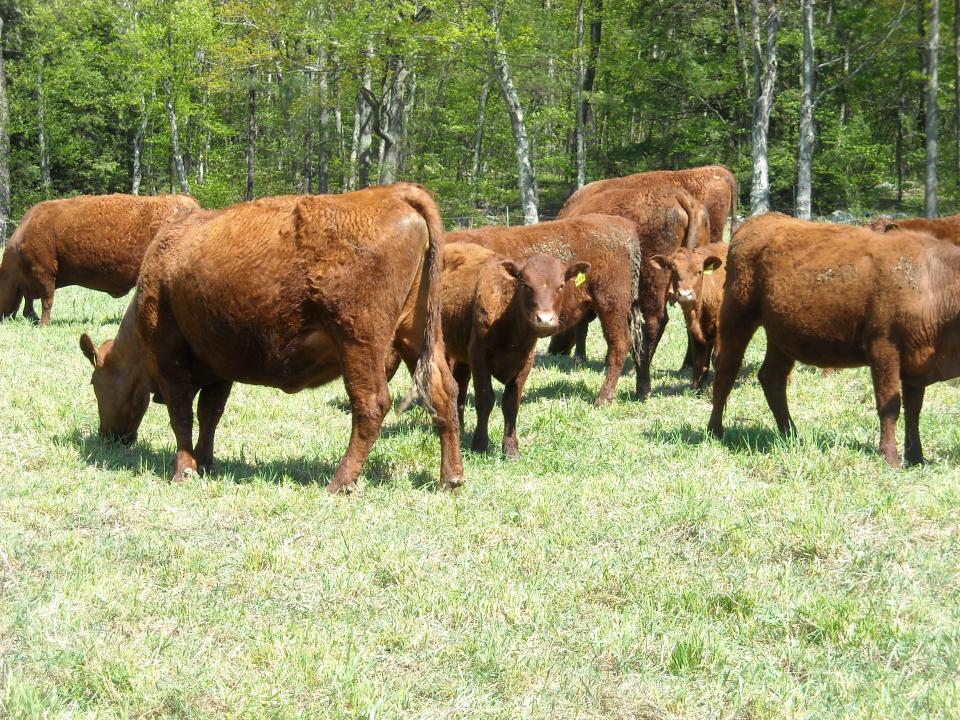
Paradigms colliding
Some resistance to raising cattle at all for beef comes from baby boomers who grew up on books such as "Diet for a Small Planet" (1971), a best-seller in its day, which calculated the negative economic, social and environmental costs of a meat-based diet. The result was a tapering or total elimination of meat for many boomers long ago. At that time, the switch to a vegetarian diet seemed both a moral and a healthy choice. But after decades of monocultures within the industrial farming system, its visible environmental impacts and a deeper understanding of soil dynamics, the wisdom of such a choice is no longer very clear-cut.
In 2006, Michael Pollan addressed the problem with more timeliness in his book "The Omnivore’s Dilemma." Pollan, who enjoys a good steak, asked if it were feasible to oppose the factory faming of animals without eliminating meat entirely from the diet. A blanket approach would be to boycott the whole industry, but a more nuanced one might be to inquire more about how the animals are raised and treated, and what they are fed.
From a regenerative angle, the key question is how do these factors affect the health of the soil. Does 100% grass-fed include moving the cattle through a multipaddock system so as to maintain the health and vitality of the plants and animals, while simultaneously lessening global warming through carbon sequestration?
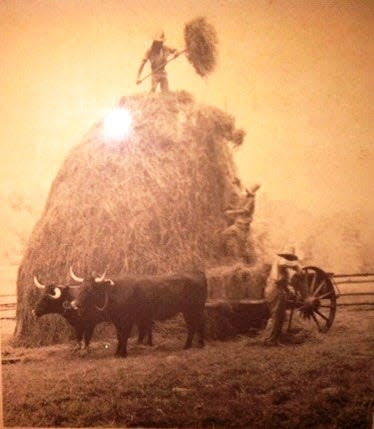
What happened to the soil?
For millennia the grasslands that covered much of our planet also kept it cool, but not without help. In North America alone, tens of millions of buffalo once roamed across the vast plains, lightly tilling the ground with their hooves, and leaving behind nutritious manure paddies for roving dung beetles to roll into perfect spheres, their eggs inside, and then bury a foot deep. With rainwater this natural fertilizer easily reached the root depths and spread over great distances with the herds kept on the move by the scent of fresh grass ahead and by predators behind.
But by 1890 those tens of millions of buffalo had dropped to less than 1,000 due mostly to rapacious hunting practices linked to the lucrative fur trade. Ken Burns captured this last year in his far-ranging documentary American Buffalo. But what happens to plants when animals with whom they coevolved are no longer on the land? Nearly a century and a half later we are living on a planet with 12 billion acres of bare ground. In the U.S. alone, millions of acres of grassland have been converted into monocultural cropland largely to grow soybean and corn for livestock kept fenced inside enormous feedlots.
According to Shinn, who has raised 100% grass-fed cattle for decades on his farm in Hardwick, 97% of U.S. beef cattle in this country goes to a feedlot to live out its last months fed solely on corn and soybean even though these herbivores never evolved to eat grain at all. “They are all grass-fed cattle when they start out,” said Shinn. “Why would we feed them grain? The mamma grazes, they drink their mother’s milk, and when they are a year old, they go to the feedlot.“ About 500,000 calves of beef cattle are born every year in the Northeast and all end up in feedlots out West.
A major shift in the food industry in the United States occurred after World War II when American factories, geared up for making tanks and munitions, had lost their purpose. With the war over and won, factories made the switch from war planes and explosives to producing tractors and fertilizers. The multiaward-winning 1946 film "The Best Year of Our Lives" devotes a scene to this postwar surplus by offering a glimpse of a field of defunct war planes junked to salvage the metal. “Ammonia went from the production of explosives to its use in fertilizers,” said Shinn. “They found you could zap the soil.”
In terms of agriculture, farmers and ranchers moved from grazing livestock on pasture land to confining them in grassless pens where they were fed grain grown with synthetic fertilizers, pesticides and fungicides. These chemical industries also relied heavily on fossil fuels. As for the animals, cows with stomachs evolved to eat grass yet forced to consume grain naturally developed acidosis, a condition that leads to the overproduction of acid-producing bacteria, which then necessitated regular treatment with antibiotics.
The corn and soy fed to the livestock were abundant and cheap because of the government subsidization of these feed crops. The tractors that replaced warplane production were promoting the mechanical tillage of the soil, a practice now widely understood to destroy the microbiome of living soils. In this way, the prairie’s 8-foot soils were lost in that whole ramped-up system of industrialized agriculture. Said Shinn, “It was because you had monocultures that you had pesticides. Then you had the chemicals that could kill your pests. Then you end up with dead soil. That’s where we’re at.”
Shinn, who has worked as a grass-fed beef consultant throughout North America (including at the Lakota of Cheyenne River Reservation), in England, New Zealand, Uruguay and Argentina, described a road trip through the Midwest, driving all day on a highway through Indiana and Illinois, two of the eight Corn Belt states, before the corn had been sown that year. “There was something weird,” said Shinn. “No weeds were growing. Yet you go to Manhattan and weeds come up through the asphalt! This is like miles and miles and miles. And this is our breadbasket. This is what we’ve done to it. It’s a very sad story because of those chemicals. Yet this could all recoup in two to three years.”
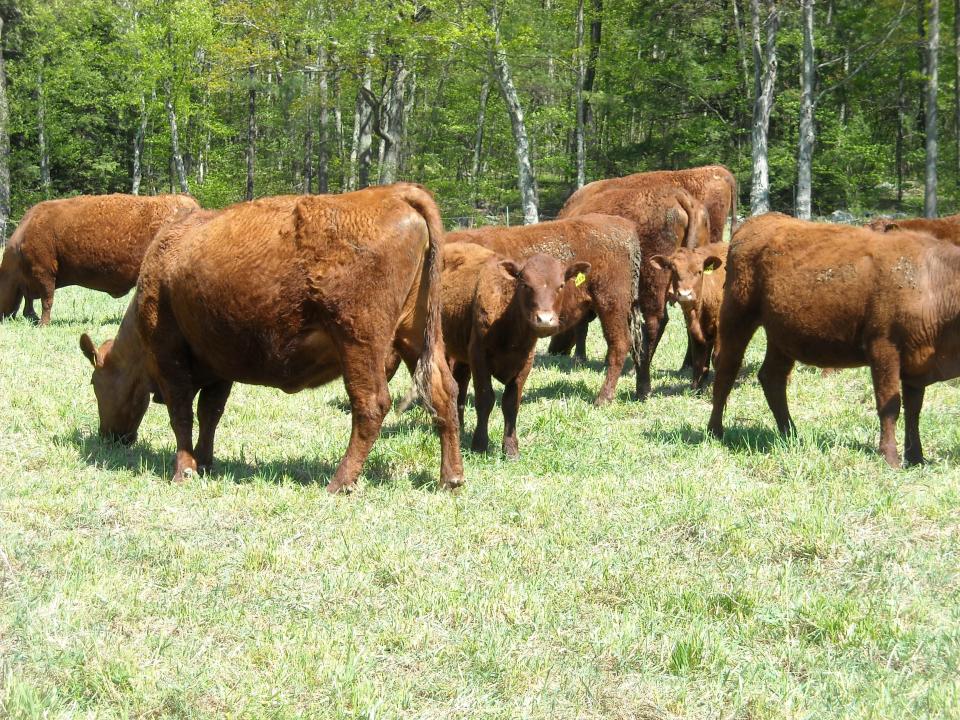
Where are we now?
Besides being the hottest year on record, 2023 was a historic year in terms of the number of costly weather and climate disasters. According to the National Centers for Environmental Information, the monetary cost alone totaled $92.9 billion. Besides the drought and heat waves across the Midwestern and Southern U.S., there were floods in California and Florida, tornados across Central and Eastern parts of the country, and a wildfire linked to abandoned sugarcane plantations that destroyed the historical town of Lahaina on Maui in Hawai’i.
Turning his attention to flooding, Shinn expressed no surprise about repeated flooding of the Mississippi. The whole Mississippi River watershed is now corn. It takes 30 minutes for water to percolate down into that soil. This situation has to cause flooding because water cannot be absorbed in such soil. “You may not want to eat the cattle,” said Shinn, “but the cattle can fix that situation. Or buffalo — 60 million buffalo and 8-foot-deep soil, and 7-foot-tall grass.”
Shinn’s voice now sounds nothing less than prophetic. The health of the land was once possible because of a symbiosis of large herbivores, photosynthesis, the grass and the microbes. But the good news that he also brings to this difficult juncture is that the former wholesome state can be biomimicked precisely even at this point in time. He explained how land is porous as a sponge when carbon is there and can hold seven times its weight in water and that the natural biology of healthy soil also involves transpiration and rain. “But we have destroyed that. I mean whole watersheds, and we wonder why,” said Shinn. “I always tell people that I can stop the flooding in Mississippi. I can cure drought in the West. You just need to give me the three states of Iowa, Illinois and Indiana — and a big herd of cattle. But no one has taken me up on it yet.”
The author would like to thank Jim Laurie, co-founder of Biodiversity for a Livable Climate, for his devotion to regenerating bare lands everywhere and for his many online courses.
This article originally appeared on Telegram & Gazette: Hero of Hardwick: Embracing regenerative grazing

